From the development of a host of prototypes for healthcare applications to creating a drone with bat-like wings, here’s a brief look at the desired outcomes of the winning projects of the Kohli Challenge Proposal Scheme.
When TCS established the FC Kohli Center on Intelligent Systems as an umbrella organization at IIIT Hyderabad in 2015 to strengthen the existing research groups at IIITH and facilitate new activities in AI-related areas, driving ambitious research projects with high impact and long-term relevance was a priority. Towards this, KCIS launched a Kohli Challenge Project (KCP) Scheme and invited proposals from the researchers of IIITH.
The selection process itself underwent multiple rounds of scrutiny both by internal and external evaluators based on set parameters but not limited to innovation factors, social impact potential, applied AI, spin-off potential and system complexities. There were three projects that received full funding support; the creation of DEA (Dielectric Elastometric Actuator) birds or bird-like drones, the development of technologies and prototypes for various healthcare applications and the design of an AI-incorporated RF bio-sensor based prototype. Research grants typically assist not only the immediate projects they are meant to fund but also have a significant impact by spawning other associated areas of research. Here’s how.
Mission Parikshit
One of the first projects that Dr. Abhishek Srivastava, Principal Investigator and Dr. Anshu Sarje embarked upon as part of Mission Parikshit was the development of a low-cost, reliable, and fast hand-held pediatric pneumonia detector. As a multidisciplinary project, it involved circuits, sensors, computational and clinical aspects. In addition to this, the team also worked on the development of a lung sound analyzer, fall detection and location monitoring of factory workers, elderly fall detection and daily monitoring of life activities, an integrated vital measurement system that includes temperature, SpO2, BP, Heart rate, lung sound analysis, and Electrochemical Impedance Spectroscopy (EIS)-based protein analysis, gas sensor and analyser for preventing health hazards, non-contact breath rate and heart rate monitor using a radar sensor, and nano rods-based biosensors for protein sensing.
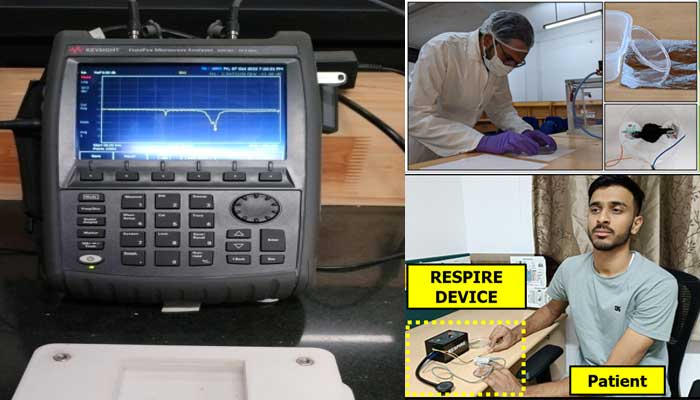
According to the researchers, the grant was instrumental in the setting up of a chip-characterization lab with state-of-the-art equipment. “These facilities did not exist in IIITH previously. Now this lab’s equipment is being used in different projects by different groups and also by other institutes,” states Dr. Srivastava. Besides this, an electronic system design and an electronic design automation (EDA) lab facilities were also launched. These are tools that are essential in carrying out state-of-the-art research activities in the VLSI area. Some of the equipment and tools that were procured via the grant include a mixed signal oscilloscope, a data acquisition system, an oven for sensor fabrication, a 3D printer, consumable items like micro-controllers, sensors, and more.
“For the first time in the history of IIITH, we could conduct a tapeout – a significant milestone in the production of Integrated Circuits (ICs). With tapeouts, we now have a chance to submit our research work in the top conferences and journals,” says Dr. Srivastava. The newly developed facilities have empowered both students and researchers, fostering an environment of innovation and high-quality research and helped in accelerating the Center for VLSI and Embedded System Technologies’ (CVEST) progress. It is evident in other funding that they were able to attract such as 23 lakhs from DST under the Technology Development Program where the prototype that was developed helped in the proposal of worker safety devices, 3.12 crore from MeiTy under the Chip-to-Startup program to build chips and systems for healthcare and security applications using radar sensing, 26 lakhs from iHub-Data to develop systems improving commuters’ health and road safety, and 12 crore from DST under the Promotion of University Research and Scientific Excellence (PURSE) program which aided in the development of chip characterization and circuit measurement facilities.
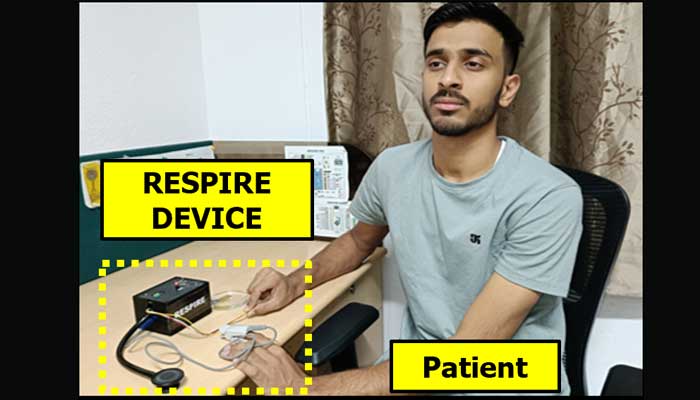
“We have a number of on-going research work such as the development of neonatal heart and breath rate sensing, synthesizing proteins and antibodies for lab testing, integrating additional features such as blood pressure and respiratory rate into the RESPIRE device, noise reduction in lung sound capture, clinical trials and approval efforts, improving packaging and form factors, etc,” says Dr. Srivastava.
RF Biosensor
The objective of this project was to design an AI incorporated biosensor prototype to detect the presence of specific biosamples, and also to design and fabricate dedicated low power CMOS Integrated Circuits. The latter was meant to process the sensed output along with protocols, supportive hardware and their integration. “To conduct a good VLSI circuit design research, you need a design lab which is well equipped with state-of-the-art EDA tools, high-end servers to run heavy simulations, various development boards, a ICs measurement/testing lab, a lab to develop prototypes/boards in addition to manpower, so that one can send novel circuits/IP for tape-out i.e., fabrication,” says Dr. Zia Abbas, Principal investigator, adding that TCS funding through the grant greatly helped in establishing such labs. “Now, I am sending my novel circuits/IPs for tape-out which otherwise would have been limited to circuit-level results, thereby fulfilling my goal as VLSI researcher,” he remarks.
The funding helped in the upgradation of the Bioelectronics and setting up of AI-Hardware Labs through the procurement of vital equipment such as Autoclave, microcentrifuges, sonicator, lab freezer, biohood, orbital shaker bench and many more. The AI hardware lab is overseeing the development of several hardware prototypes such as a low-cost in house vector network analyzer. It is also developing a machine learning-based self-adapting hardware methodology to negate the effects of real time voltage and temperature variations. The VLSI Design lab too has been upgraded with the procurement of state-of-the-art EDA tools, servers and workstations to install the said tools as well as several circuit boards and kits. Plus, the outcomes obtained as a result of the Kohli Challenge grant significantly helped in securing other funds such DST-PURSE (as Co-PI), c2s MieTy (as Co-PI) and another proposal in a consortium that is currently under review.
Bat-Like Drones
“The TCS grant has been a substantial one for an area of research otherwise hard to fund because of its moon-shot nature,” remarks Dr. Aftab Hussain, Principal Investigator of the project titled, ‘Towards bird-like drones using polymer-based artificial muscles”. In a span of 18 months, the group designed and fabricated a flexible flapping wing powered by Dielectric Elastomeric Actuators, much like a bat’s wing. They also fabricated a pump-like structure for an artificial heart and successfully tested the flight of this ornithopter. Thanks to the grant, the researchers were able to procure several material processing equipment such a centrifuge, vacuum chamber, hot-plate, probe sonicator and so on. “This equipment is still being actively used by many of my students in various projects, sometimes even projects unrelated to the theme of the grant. These include the development of a conductive polymer ink, a flexible e-skin, and a colorimetry-based water sensor,” says Dr. Hussain. The results and the research papers published helped them in obtaining other funding such as the PURSE grant from DST. “The existence of a functional materials processing lab increased the confidence of the committee that we can handle such a sophisticated lab in an otherwise “IT” institute,” he states.
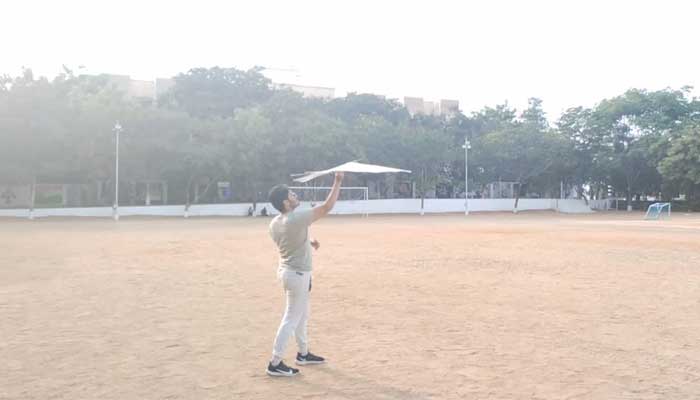
Conclusion
According to Prof. Madhava Krishna, Head of the Kohli Center on Intelligent Systems (KCIS), “The KCP was the first of its kind attempted within IIITH and turned to be the highest source of internal funding disbursed thus far. It provided a setting and ambience to the faculty to try out unconventional projects which are otherwise difficult to get funded. All the teams had a strong interdisciplinary representation, which is typically uncommon and the contribution of the diverse disciplines was evident in these projects. The review and the selection process were both rigorous undergoing multiple rounds and typically the reviews were appreciative of the progress, the results shown and encouraging. The success stories are suggestive that more such challenge proposals can stimulate cross disciplinary and product driven research within the Institute.”
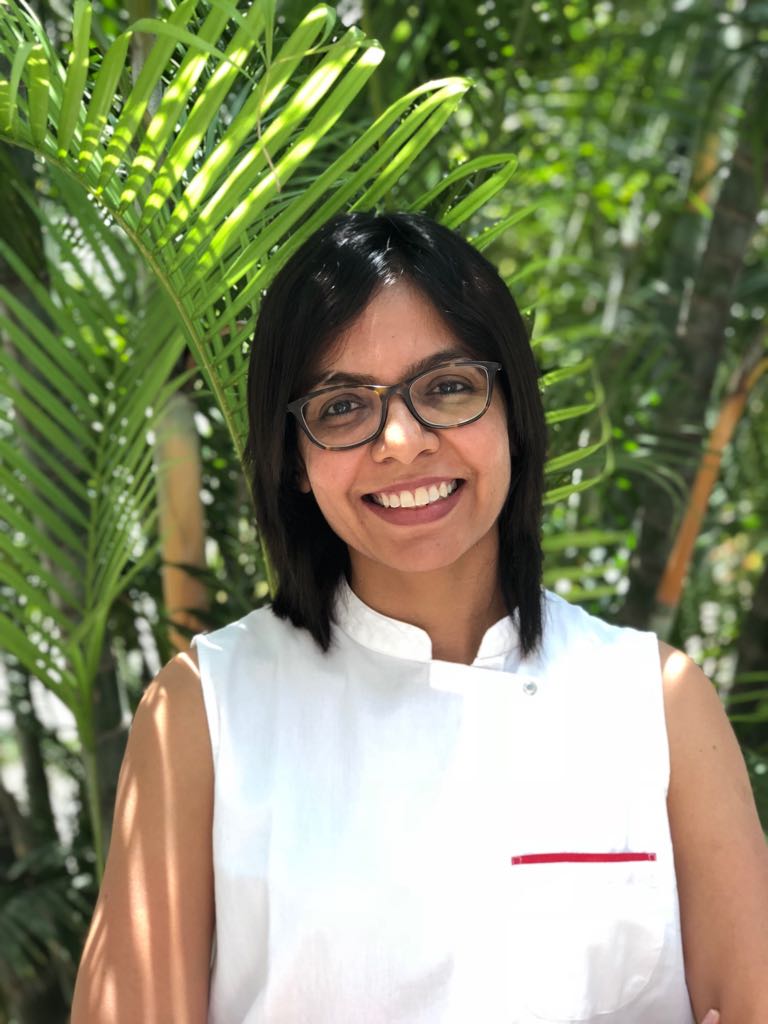
Sarita Chebbi is a compulsive early riser. Devourer of all news. Kettlebell enthusiast. Nit-picker of the written word especially when it’s not her own.
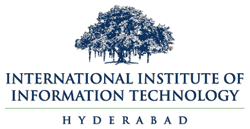

Next post